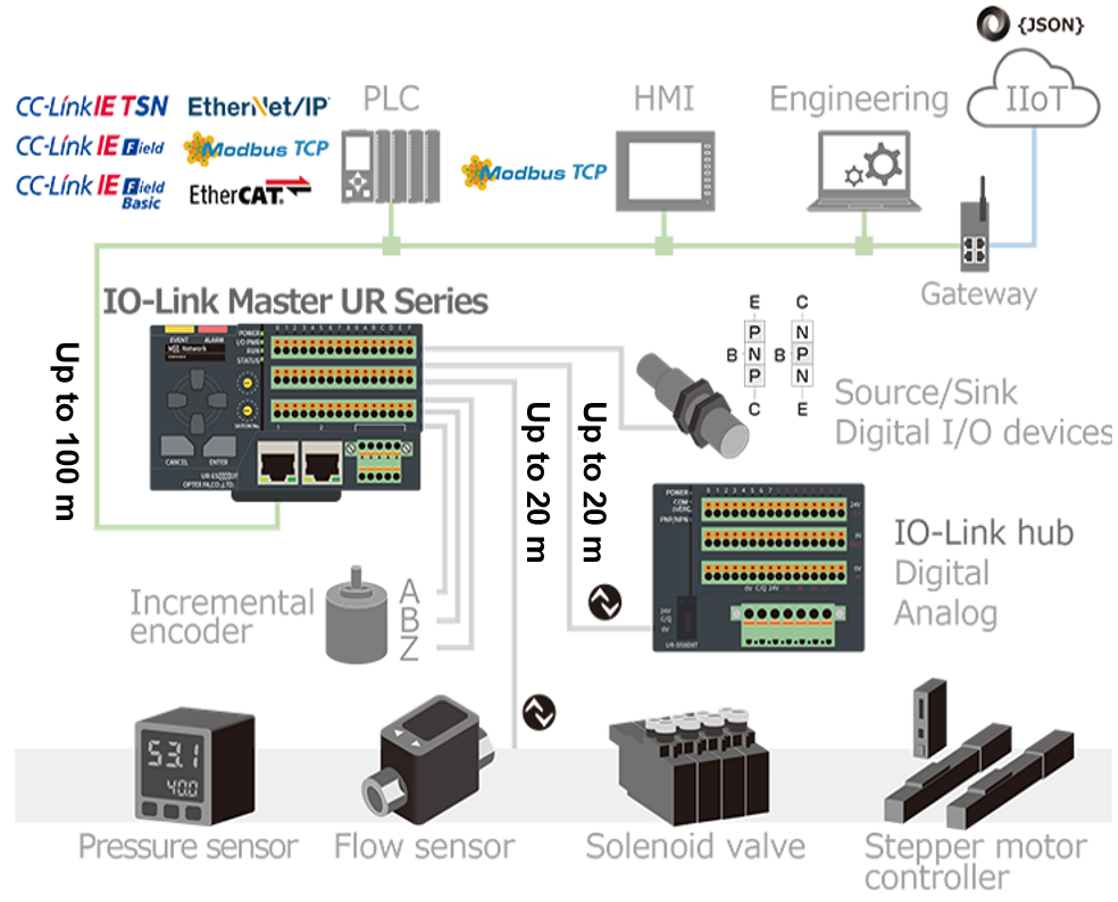Precautions for using IO-Link
Power Capacity of Connected Devices
The power capacity of IO-Link devices is 0.2 A or less in current consumption due to their specifications.
Therefore, the IO-Link Master also cannot connect to devices that exceed 0.2 A per point.
Since the IO-Link Master can be connected to devices other than IO-Link devices, be sure to check the current consumption of the connected devices.
Particular attention should be paid when connecting to motors and actuators. When connecting to a device that exceeds 0.2 A, it is necessary to take countermeasures such as supplying power from another power source separately. (Port Class B can be connected to high-capacity devices.)
Also note that when connecting multiple devices to the IO-Link master.
Each point can be connected to 0.2 A devices, but there is a specification of up to 2.5 A for 16 devices.
*If 16 0.2 A devices were connected, the result would be 0.2 A x 16 devices = 3.2 A, which exceeds 2.5 A.
Port Class
Port Class A (Type A)・・・
In general, it is compatible with 3-wire cable.
The function of pins 2 and 5 is not defined for this type.
Port Class B (Type B)・・・
In general, it is compatible with 5-wire cable.
Capable of connecting to high-capacity devices, this type has pins 2 and 5, which are primarily assigned to supply voltages.
Cable Length
Cable length between PLC and IO-Link Master is Maximum 100 m (network using Ethernet), but cable length between IO-Link Master and IO-Link device is Maximum 20 m.

IO-Link Complete Guide
Back to top 



